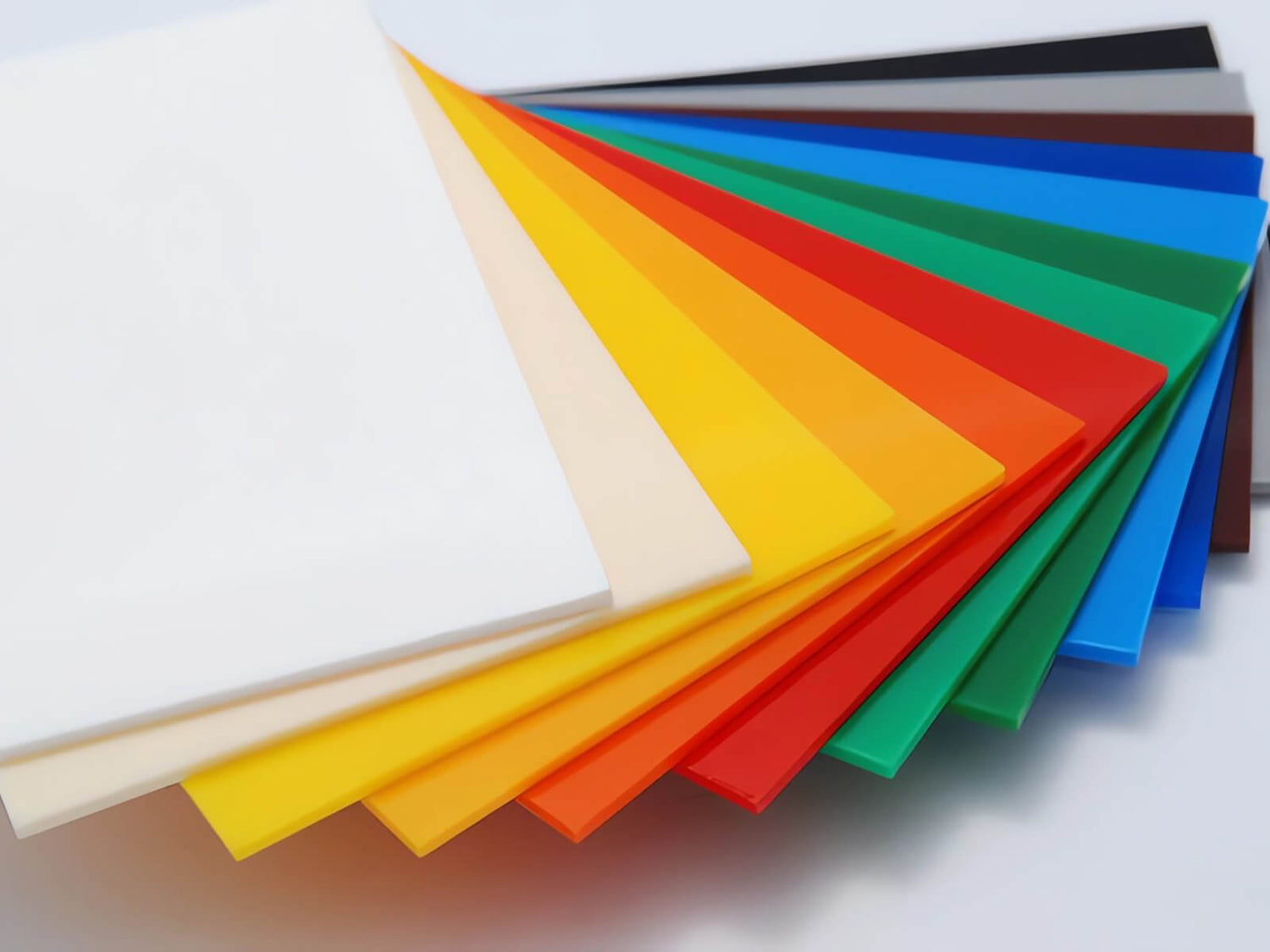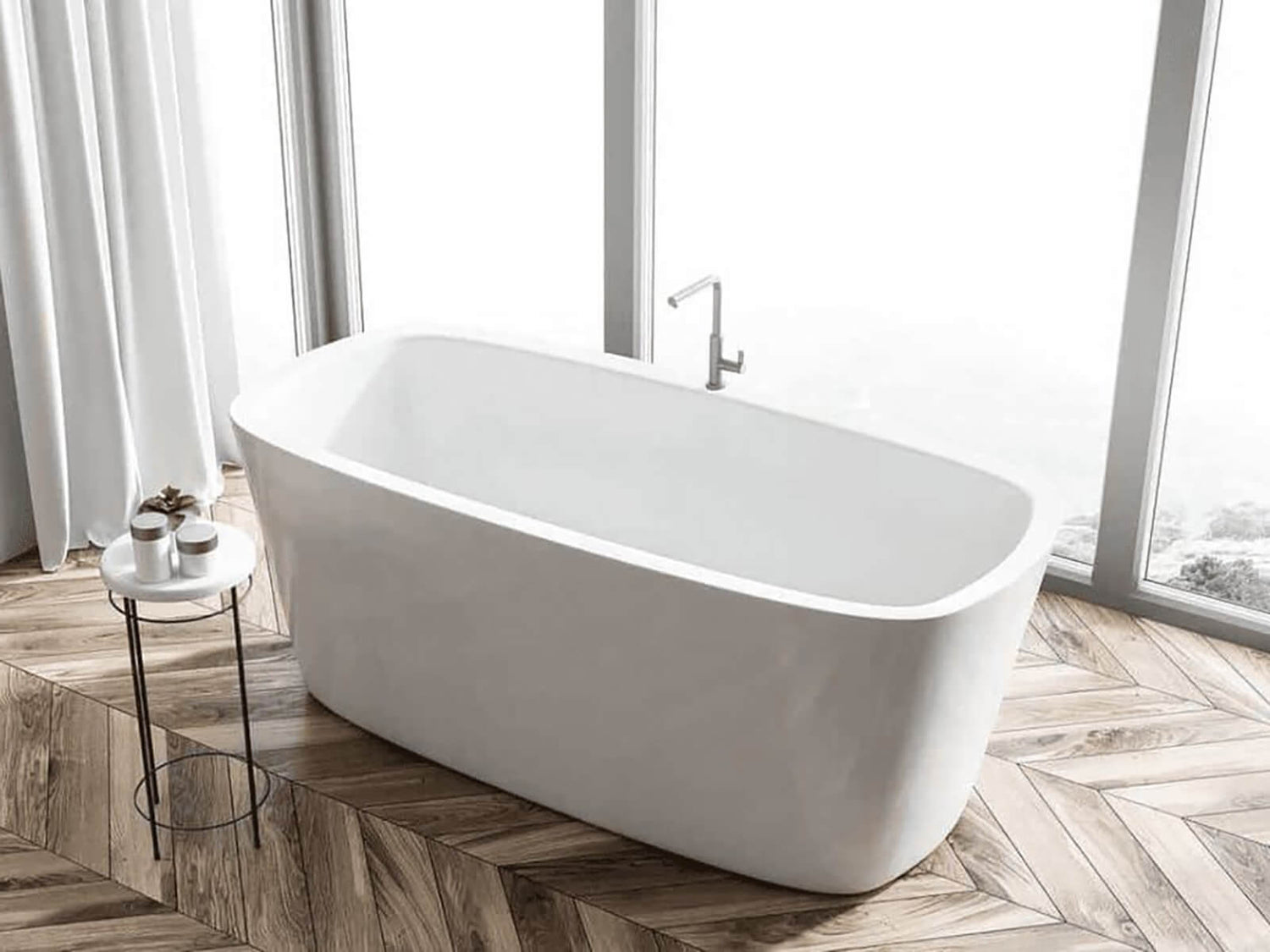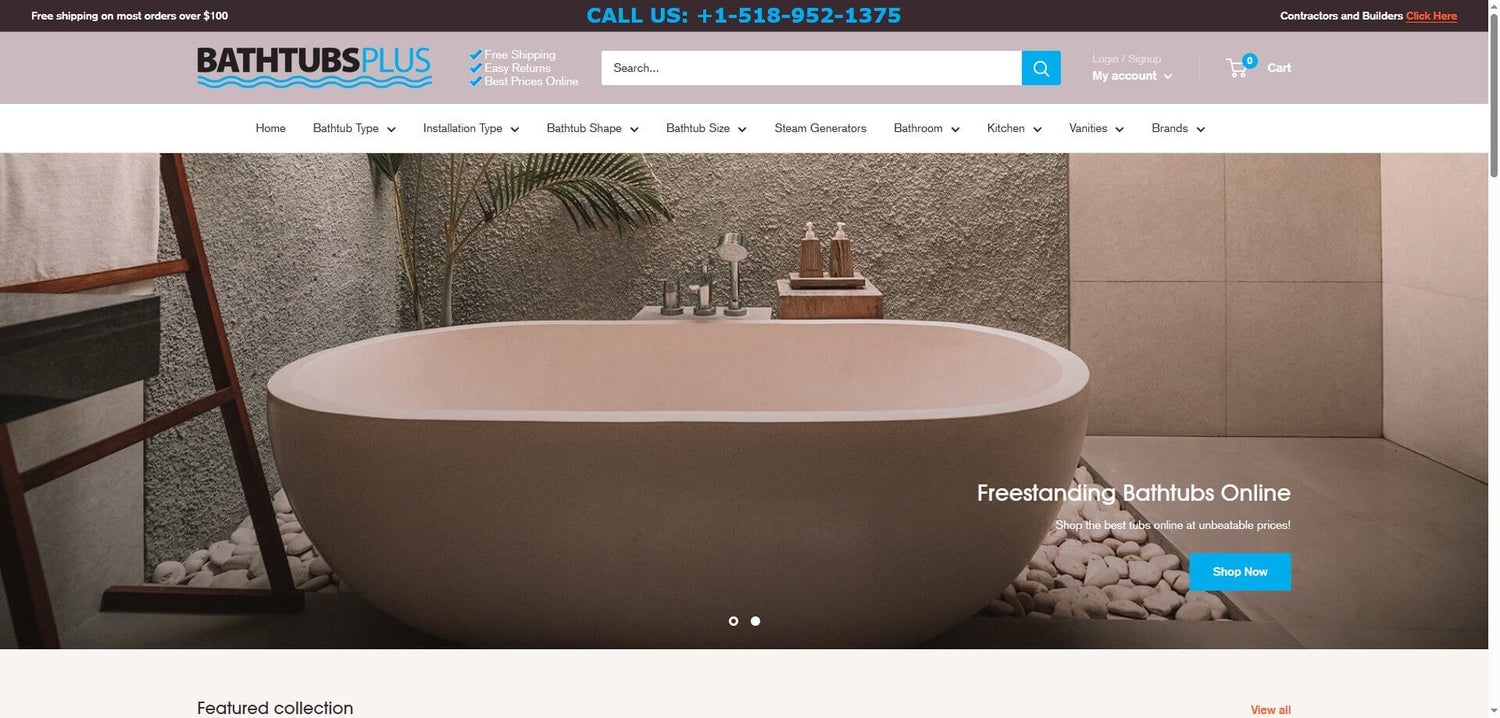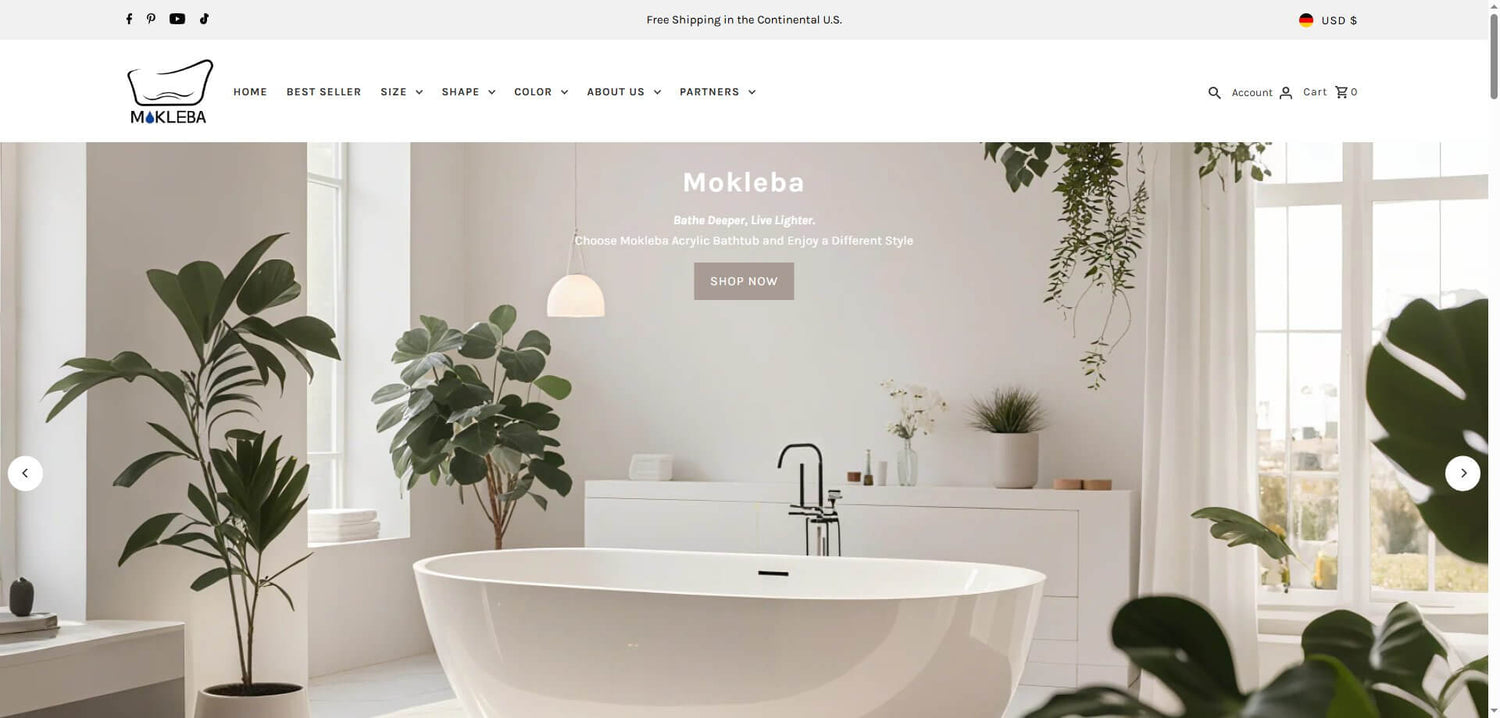When designing a modern bathroom, few elements are as important as the bathtub. It’s not just a place to wash—it's a sanctuary for relaxation, a centerpiece of style, and a reflection of personal taste. Among all the materials available, acrylic bathtubs stand out for their unique balance of beauty, durability, and cost-effectiveness. But are they the right choice for your space? To answer that question, we'll explore everything you need to know about acrylic bathtubs—from the material’s origin to the different styles, pros and cons, maintenance tips, and brand comparisons—so you can make an informed, confident decision.
Basic Overview of Acrylic Bathtubs

What is Acrylic
Acrylic, or polymethyl methacrylate (PMMA), is a transparent thermoplastic derived from acrylic acid or related compounds. While it may look like glass, it’s actually much lighter and more durable, earning it the nickname “organic glass.” The development of acrylic materials can be traced back to the late 19th century, but its commercial use didn’t begin until the early 20th century.
Originally used in aviation—such as airplane windshields and tank vision blocks—acrylic eventually made its way into consumer applications thanks to its flexibility, clarity, and resilience. The first acrylic bathtub was introduced in 1948, and since then, it has become one of the most popular choices for residential and commercial bathrooms alike.
Further Reading: What is Acrylic and Its Uses

What Is an Acrylic Bathtub
An acrylic bathtub is made by heating and molding sheets of acrylic plastic into various shapes. To increase strength and durability, these sheets are often reinforced with fiberglass. The result is a lightweight, sturdy, and attractive tub that can be manufactured in countless forms and sizes.
What truly sets acrylic tubs apart is their design versatility. Whether you want a deep soaking tub, a sleek freestanding centerpiece, or a compact corner installation, acrylic can be formed to meet your needs. This flexibility makes them a favorite among interior designers and homeowners looking to personalize their space without compromising performance or budget.
Pros and Cons of Acrylic Bathtubs
✅ Pros of Acrylic Bathtubs:
- Durability: Acrylic is resistant to chipping, cracking, and fading, especially with proper care.
- Lightweight: Easier to install compared to cast iron or solid stone tubs. It also puts less stress on your bathroom floor.
- Great Heat Retention: Enjoy longer soaks without constantly adding hot water.
- Low Maintenance: The non-porous surface prevents buildup of mold, mildew, or soap scum.
- Design Variety: Acrylic can be molded into virtually any shape—perfect for modern, traditional, or space-saving designs.
- Affordability: Acrylic tubs generally cost less than stone resin or cast iron, making them budget-friendly without sacrificing elegance.
❌ Cons of Acrylic Bathtubs:
- Prone to Scratches and Stains: Though surface scratches can be buffed out, they still require occasional attention.
- Sensitive to Harsh Chemicals: Avoid abrasive cleaners, which can dull the surface.
- May Fade Under Sunlight: Over time, UV exposure can discolor acrylic tubs, so it’s best to avoid placing them under direct natural light.
- Not as “Luxurious” as Heavy Materials: Some people prefer the solid, cool-to-touch feeling of a cast iron tub. Acrylic may feel slightly “plastic” in comparison.
Acrylic vs Solid Surface vs Fiberglass
| Feature | Acrylic Bathtub | Solid Surface Bathtub | Fiberglass Bathtub |
|---|---|---|---|
| Material Composition | Acrylic + fiberglass reinforcement | Composite of resin + minerals | Fiberglass with a gelcoat finish |
| Durability | Very good, slightly softer than solid surface | Extremely durable, scratch-resistant | Less durable, prone to cracking over time |
| Weight | Lightweight | Heavier than acrylic, lighter than cast iron | Very lightweight |
| Heat Retention | Excellent | Excellent | Moderate |
| Maintenance | Easy, but needs gentle cleaning | Very easy, stain-resistant | Requires frequent cleaning due to porous surface |
| Cost | Affordable | Premium | Most budget-friendly |
| Aesthetic Options | Wide range of styles and colors | Limited but elegant finishes | Fewer design choices |
Types of Acrylic Bathtubs
-

Acrylic Alcove Bathtub
This is the most common configuration found in homes. It's installed within a three-wall enclosure, making it ideal for small to medium-sized bathrooms where space optimization is key.
- Best for: Homes with combined bath-shower setups.
- Advantages: Easy to install; works with standard plumbing; ideal for families.
- Style Tip: Pair with a sliding glass screen or a patterned shower curtain for a modern touch.
-

Acrylic Straight Bathtub
Also known as a standard rectangular tub, this design is perfect for clean lines and minimalistic aesthetics. It can be built into an alcove or placed on a custom platform for a more elevated look.
- Best for: Homeowners favoring simplicity and functionality.
- Advantages: Streamlined shape fits most layouts; budget-friendly; adaptable.
- Use Case: Great for guest bathrooms or rental properties.
-

Acrylic Corner Bathtub
A space-saving solution that fits neatly into a bathroom corner, usually with a triangular or fan-like shape. Despite the compact footprint, many models are surprisingly deep, offering a comfortable soaking experience.
- Best for: Small master baths, apartments, or en suite bathrooms.
- Advantages: Maximizes unused corners; visually opens the room.
- Style Note: Often comes with integrated seating or whirlpool features for added comfort.
-

Acrylic Freestanding Bathtub
Freestanding tubs are the showpieces of modern bathrooms. Available in oval, slipper, egg, and pedestal shapes, these tubs allow 360-degree access and elevate the bathroom’s luxury quotient.
- Best for: Large bathrooms with open space and contemporary design.
- Advantages: Striking visual appeal; easy to place anywhere; available in various styles.
- Considerations: Requires floor-mounted faucets and careful plumbing placement.
-

Acrylic Shower Bathtub Combo
A hybrid that merges a soaking tub with shower functionality, often including a built-in apron and provisions for a glass panel or curtain. It's the perfect solution for those who want both bathing and showering without dedicating extra space.
- Best for: Busy households, small homes, or second bathrooms.
- Advantages: Maximizes functionality; efficient use of space; cost-effective.
- Tip: Choose a slip-resistant base for added safety.
-

Acrylic Walk-In Bathtub
Typically used for senior or mobility-impaired users, walk-in tubs feature a door for easy entry, a built-in seat, and often include therapeutic jets.
- Best for: Aging-in-place designs or homes with elderly residents.
- Advantages: Safe, accessible, and often comes with hydrotherapy benefits.
- Feature Note: Many offer fast-drain technology and anti-slip floors.
Recommended Acrylic Bathtub Brands

Giving Tree Home
A rising star in the world of affordable luxury, Giving Tree Home specializes exclusively in freestanding bathtubs, offering over 100 design variations that cater to modern aesthetics and ergonomic comfort.
- Price Range: Most models are priced under $1,000, making them ideal for budget-conscious buyers without sacrificing modern aesthetics.
- Ideal For: Homeowners seeking stylish yet affordable bathtubs with solid warranties (usually 3 years) and responsive global support.
- Highlight: Our small soaking tubs with built-in seats are especially popular among urban apartment dwellers.

BathtubsPlus
Known for its specialized focus on hydrotherapy, BathtubsPlus features a curated selection of acrylic whirlpool tubs, massage tubs, and corner tubs. This brand merges the therapeutic benefits of spa tubs with the flexibility of acrylic.
- Unique Offering: Many models come equipped with adjustable water jets, chromotherapy lighting, and ergonomic backrests.
- Ideal For: Homeowners wanting a spa-like experience in their bathroom, especially those focused on wellness or recovering from muscle fatigue.
- Best-Selling Models: Acrylic massage tubs with customizable jet settings and built-in heaters.

Moklebabath
A boutique manufacturer with a laser-sharp focus on handcrafted acrylic bathtubs. Though they offer fewer models than mass-market brands, each design reflects meticulous attention to detail and high manufacturing standards.
- Craftsmanship: Small-batch production ensures each tub is carefully inspected, and the finish quality is consistently high.
- Design Language: Emphasizes sculptural forms, smooth finishes, and seamless one-piece molding.
- Pros: Premium materials, quiet soaking experience, and often customizable features.

FerdY
FerdY is a brand specializing in freestanding acrylic bathtubs, known for its simple and elegant European-inspired designs. The brand focuses on offering high-quality craftsmanship at competitive prices, meeting the modern household's need for both aesthetics and functionality.
- Product Features: The bathtubs have smooth, elegant lines that emphasize space and comfort.
- Design Style: Predominantly European modern style, which fits well with minimalist, modern, and Scandinavian home decor themes.
- Target Audience: Users who value design and are looking to create a luxurious bathroom experience in their homes while maintaining a balanced budget.
Cleaning and Maintaining Your Acrylic Bathtub
One of the biggest benefits of owning an acrylic bathtub is its ease of maintenance. With regular care, your tub will maintain its shine and functionality for years. Here's a suggested routine:
Routine Maintenance (every 2 weeks):
- Rinse debris: Use warm water to rinse off hair, dirt, and soap residue.
- Create a gentle cleaner: Mix warm water with a few drops of mild dish soap.
- Wipe down surfaces: Use a soft cloth or sponge to gently scrub.
- Rinse thoroughly: Remove all soapy residue to prevent buildup.
- Dry completely: Prevent water spots and mold by drying with a microfiber towel.
Deep Cleaning Tips:
- For stubborn stains, apply a paste of baking soda and water, scrub gently, and rinse.
- For hard water deposits, use a solution of white vinegar and water.
- Avoid abrasive cleaners or steel wool, which can scratch the surface.
- If small scratches appear, a fine polishing compound or acrylic repair kit can restore the smooth finish.
FAQs About Acrylic Bathtubs
How Long Does an Acrylic Bathtub Last?
A high-quality acrylic bathtub typically lasts 10 to 15 years, depending on usage frequency, daily maintenance, and installation quality.
For more details, please refer to our dedicated article: “How Long Does a Bathtub Last”
How Much Does an Acrylic Bathtub Weigh?
On average, acrylic bathtubs weigh between 32 and 45 kg (approximately 70 to 100 lbs). Compared to cast iron or stone bathtubs, they are much lighter and easier to handle.
How Much Weight Can an Acrylic Bathtub Support?
Weight capacity varies depending on the brand and design. For example, Giving Tree Home's freestanding acrylic bathtubs can safely support up to 770 lbs (around 350 kg).
For information on other models, see: “How Much Weight Can an Acrylic Bathtub Hold”
Do Acrylic Bathtubs Turn Yellow Over Time?
Premium acrylic is highly resistant to yellowing. However, prolonged exposure to direct sunlight or use of harsh cleaning chemicals may cause discoloration.
If your bathtub has started to yellow, we recommend reading: “How to Whiten a Yellowed Acrylic Bathtub”
Are Acrylic Bathtubs Easy to Install?
Yes. Thanks to their lightweight construction, acrylic bathtubs are very easy to install. If you’re looking for a hassle-free option, a freestanding acrylic bathtub is an ideal choice.
Can a Cracked Acrylic Bathtub Be Repaired?
Yes. Small cracks can often be repaired using an acrylic repair kit. For more serious damage, professional repair or refinishing is recommended.
For step-by-step instructions, see: “Complete Guide to Repair Acrylic Bathtub”
Which Is Better: Acrylic or Fiberglass Bathtubs?
Both materials are lightweight and budget-friendly. However, acrylic offers better insulation, a smoother finish, and greater durability. Fiberglass is more prone to discoloration and cracking but may suit short-term or budget-conscious needs.
For a detailed comparison, read: “Acrylic vs. Fiberglass Bathtubs: Full Analysis”
How Can I Tell If My Bathtub Is Made of Acrylic?
You can identify an acrylic bathtub by touch and appearance: acrylic surfaces feel warm, have a uniform color, and produce a soft tapping sound.
For a complete guide, see: “How to Tell What Your Bathtub Is Made Of”
Ending
If you're looking for a balance of style, performance, and affordability, acrylic bathtubs are an outstanding option. They offer versatility in design, strong thermal properties, and are easy to maintain. Whether you're renovating a modern apartment or designing a luxurious spa-inspired space, there’s likely an acrylic tub that fits both your taste and budget.
More Ideas
-

Bathroom Vanity Buying Guide for Small Bathrooms
With this guide, you can learn how to select the bathroom vanities for small bathrooms. Considering size, layout, storage, and design, you can purchase a practical and attractive vanity for...
-

Double Sink vs Single Sink Vanity: Which Fits Your Bathroom Best
Compare double sink vs single sink vanity to find the perfect fit for your bathroom. Determine your bathroom size, costs, and intended use before you remodel.
-

When Is the Best Time to Take a Shower?
For many of us, showering is more than just washing up—it’s a small daily ritual that affects how we sleep, how our skin feels, and even our overall well-being. But...
-

What Is a Shower Pan—and Do You Really Need One?
If you’re getting ready to renovate your bathroom on your own, you’ve probably run into a jungle of confusing terms. The same product may have multiple names, different materials come...
-

Shower Pan Installation: 6 Steps from Selection to Finish
Have you ever experienced this: after taking a shower, your bathroom floor is either soaked or has a puddle of water? It’s not just a hassle to clean—it’s also a...
-

Shower Pan Size Guide: Must-Know Dimensions Before You Buy
When planning a shower, most of us immediately think about style and layout. But the details that truly shape your daily experience often lie beneath your feet—that’s where the shower...












